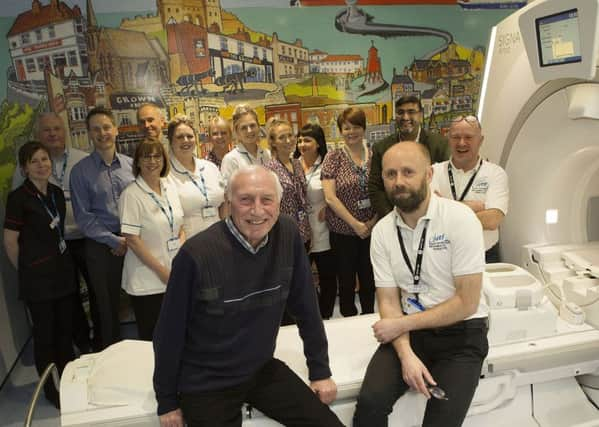South Shields artist Bob Olley opens hospital's new £1.5million scanner room


South Shields artist Bob created the colourful work ‘Coal, Ships, Fish and Chips’, which captures some of the borough’s famous landmarks, on one wall of the hospital’s scanner room - where it is proving a big hit with patients.
Bob is known for his humorous drawings and paintings of everyday life, and has supplied art works to the hospital in the past, some of which brighten the walls in the Radiology department.
Advertisement
Hide AdAdvertisement
Hide AdThe new MRI scanner - the first of its kind in the UK – gives patients from South Tyneside and Sunderland access to some of the most sophisticated technology in the world by providing highly accurate digital images.
This enables doctors to diagnose more diseases and conditions, from cancers to sports injuries, in more parts of the body, more quickly.
Bob, who worked as a painter and decorator and as a miner before finding fame as an artist and sculptor, said: “I was very honoured to be invited to officially open the new scanner service.
“It is wonderful that our local hospital can offer such fantastic equipment.
Advertisement
Hide AdAdvertisement
Hide Ad“I have my original ‘Coal, Ships, Fish and Chips’ watercolour, which is 3ft by 2ft 6in, but it is a real thrill to see it displayed on such a big scale in the scanner room.”
Dr Richard Cooper, lead consultant for radiology at the hospital, said: “We can’t thank Bob enough for allowing us decorate the scanner room, with one of his images.
“The new scanner is much more efficient, the quality of the images it provides is exceptional, and it gives us the results much faster.
“It also has amazing potential: for example, by providing visualisation of tumours in more detail we should be able to treat more of them effectively at an earlier stage.
“We are also looking at how we can use the scanner in more fields, such as cardiology, in future.”